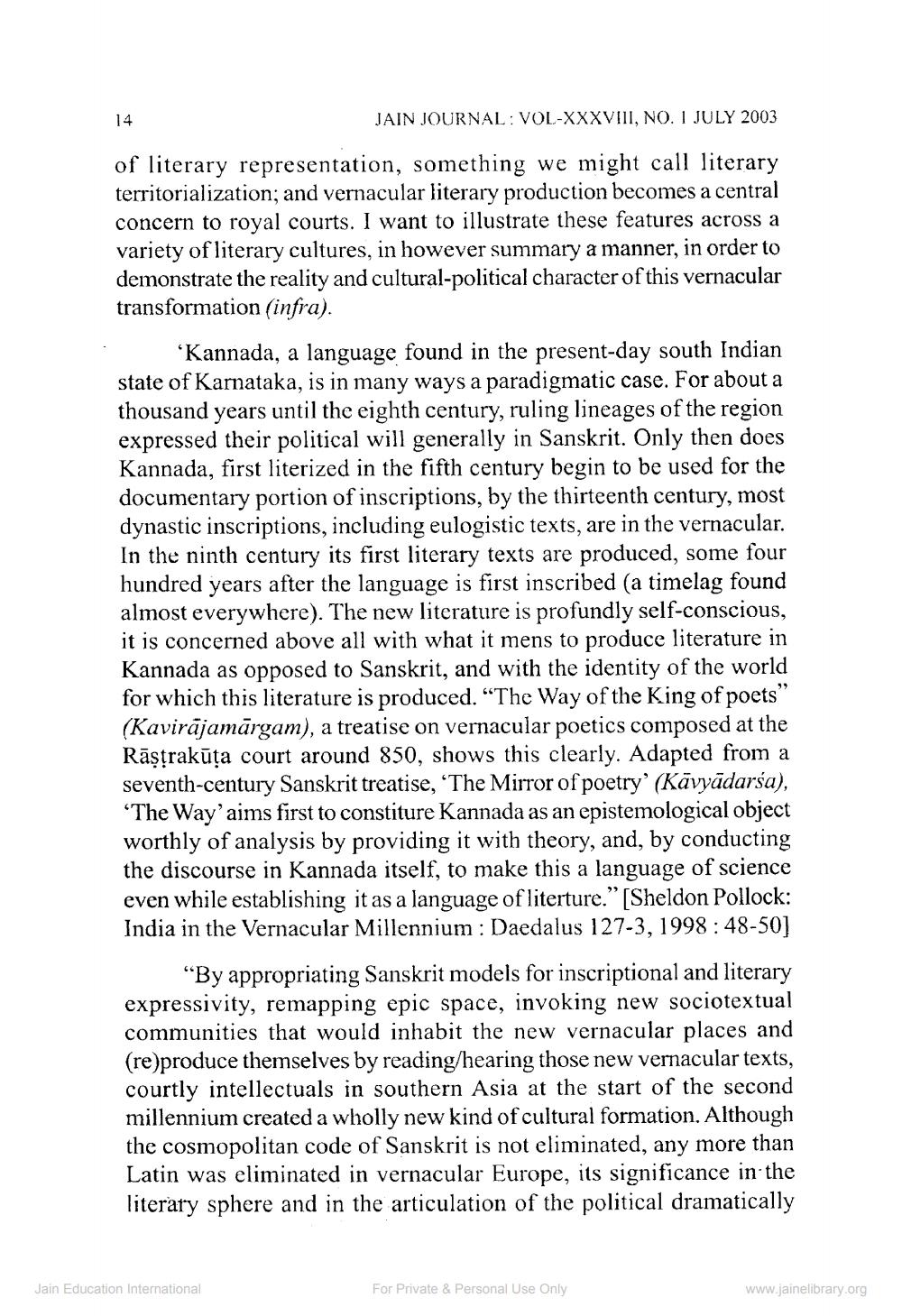________________
JAIN JOURNAL: VOL-XXXVIII, NO. 1 JULY 2003
of literary representation, something we might call literary territorialization; and vernacular literary production becomes a central concern to royal courts. I want to illustrate these features across a variety of literary cultures, in however summary a manner, in order to demonstrate the reality and cultural-political character of this vernacular transformation (infra).
14
‘Kannada, a language found in the present-day south Indian state of Karnataka, is in many ways a paradigmatic case. For about a thousand years until the eighth century, ruling lineages of the region expressed their political will generally in Sanskrit. Only then does Kannada, first literized in the fifth century begin to be used for the documentary portion of inscriptions, by the thirteenth century, most dynastic inscriptions, including eulogistic texts, are in the vernacular. In the ninth century its first literary texts are produced, some four hundred years after the language is first inscribed (a timelag found almost everywhere). The new literature is profundly self-conscious, it is concerned above all with what it mens to produce literature in Kannada as opposed to Sanskrit, and with the identity of the world for which this literature is produced. "The Way of the King of poets" (Kavirājamārgam), a treatise on vernacular poetics composed at the Rāṣṭrakūta court around 850, shows this clearly. Adapted from a seventh-century Sanskrit treatise, 'The Mirror of poetry' (Kavyadarsa), "The Way' aims first to constiture Kannada as an epistemological object worthly of analysis by providing it with theory, and, by conducting the discourse in Kannada itself, to make this a language of science even while establishing it as a language of literture." [Sheldon Pollock: India in the Vernacular Millennium: Daedalus 127-3, 1998: 48-50]
"By appropriating Sanskrit models for inscriptional and literary expressivity, remapping epic space, invoking new sociotextual communities that would inhabit the new vernacular places and (re)produce themselves by reading/hearing those new vernacular texts, courtly intellectuals in southern Asia at the start of the second millennium created a wholly new kind of cultural formation. Although the cosmopolitan code of Sanskrit is not eliminated, any more than Latin was eliminated in vernacular Europe, its significance in the literary sphere and in the articulation of the political dramatically
Jain Education International
For Private & Personal Use Only
www.jainelibrary.org




